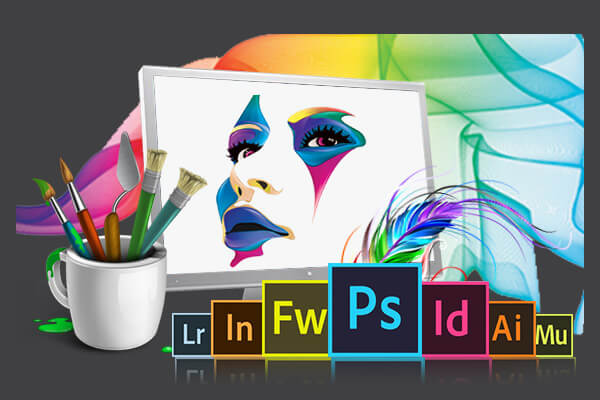Learn Graphic Design Skills for Digital Media
Introduction
In the digital age, graphic design has become an essential skill for anyone involved in digital media, marketing, or content creation. Whether you are an aspiring designer, a business owner, or a social media enthusiast, learning graphic design skills can help you create visually appealing content that captures your audience’s attention. In this guide, we will explore the fundamentals of graphic design, essential tools, and practical tips to help you become proficient in this creative field.
Understanding Graphic Design
Graphic design is the art of visually communicating messages using typography, color, images, and layout techniques. It plays a critical role in branding, marketing, and storytelling across various digital platforms. Mastering graphic design allows you to create engaging content for websites, social media, advertisements, and more.

Key Elements of Graphic Design
- Typography – The art of arranging text in a visually appealing way. Choosing the right fonts and spacing can significantly impact the readability and aesthetics of your design.
- Color Theory – Understanding colors and their emotional impact can help you create designs that evoke the right feelings and responses from your audience.
- Composition & Layout – The arrangement of elements in a design should be balanced and visually pleasing to guide the viewer’s eye effectively.
- Imagery – Using high-quality images, illustrations, and icons enhances the overall design and supports the message you want to convey.
- Branding – Consistency in design elements such as logos, colors, and typography strengthens brand identity and recognition.
Essential Tools for Graphic Design
To excel in digital media, you need to familiarize yourself with industry-standard graphic design tools. Here are some of the most popular ones:
- Adobe Photoshop – A powerful tool for image editing, retouching, and digital painting.
- Adobe Illustrator – Ideal for creating vector graphics, logos, and illustrations.
- Canva – A user-friendly online tool with templates for beginners and non-designers.
- Figma – Excellent for UI/UX design and collaborative projects.
- CorelDRAW – A great alternative to Adobe Illustrator for vector design.
- Inkscape – A free and open-source vector graphics editor.
Learning Graphic Design for Digital Media
If you are new to graphic design, here are some effective ways to learn and practice:
1. Enroll in Online Courses
Many platforms offer comprehensive courses that teach graphic design principles and software tools. Websites like Udemy, Coursera, and Skillshare provide tutorials for beginners and advanced learners.
2. Follow Design Tutorials
YouTube and design blogs have countless free tutorials that can help you understand different aspects of graphic design. Following step-by-step guides can improve your skills significantly.
3. Practice with Real Projects
The best way to learn is by doing. Start with small projects like social media posts, flyers, or website banners. Experiment with colors, fonts, and layouts to develop your style.
4. Study Design Trends
Keeping up with design trends will help you create modern and visually appealing content. Follow designers on social media, explore platforms like Dribbble and Behance, and analyze successful designs to understand what works.
5. Join Design Communities
Engage with fellow designers by joining online forums, Facebook groups, or Reddit communities. Networking with professionals and sharing your work can provide valuable feedback and motivation.
Applying Graphic Design in Digital Media
Graphic design is used in various digital media platforms, each requiring a unique approach. Here are some practical applications:
1. Social Media Graphics
Platforms like Instagram, Facebook, and Twitter rely heavily on visuals. Learning to create eye-catching posts, stories, and ads will help your content stand out and increase engagement.
2. Website and UI/UX Design
Good design enhances user experience. Learning web design principles, UI/UX fundamentals, and tools like Figma can help you create appealing websites and applications.
3. Digital Marketing
Graphic design is essential in digital marketing for creating banners, infographics, email newsletters, and online ads. A well-designed marketing campaign can boost brand awareness and conversions.
4. Video Thumbnails and Graphics
Platforms like YouTube and TikTok require visually engaging thumbnails and overlays. A compelling design can attract viewers and improve video performance.
5. Print and Merchandise Design
Even in digital media, print design is still relevant for business cards, posters, and branded merchandise. Mastering print-ready design techniques will expand your creative possibilities.
Tips for Improving Your Graphic Design Skills
- Keep Practicing – Design regularly to sharpen your skills and build confidence.
- Seek Feedback – Constructive criticism from peers and professionals can help you improve.
- Stay Inspired – Follow design trends, explore art, and take inspiration from various sources.
- Experiment and Innovate – Don’t be afraid to try new techniques and push creative boundaries.
- Build a Portfolio – Showcase your work on platforms like Behance or create a personal website to attract potential clients and employers.
Conclusion
Graphic design is a valuable skill that enhances digital media content, making it more engaging and effective. By learning design principles, using the right tools, and practicing consistently, you can master graphic design for digital media. Whether for personal projects, business branding, or professional opportunities, investing in graphic design skills will open doors to creativity and success in the digital world.
